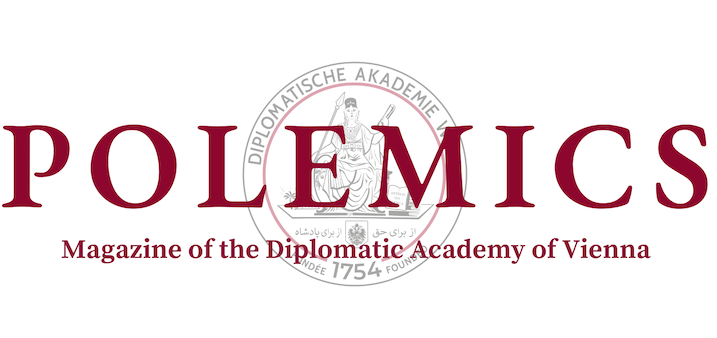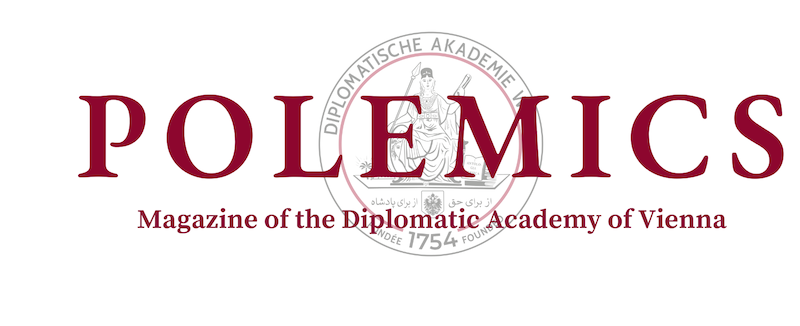On Wednesday, 16 October, 2024, an Italian Navy vessel carrying sixteen migrants of Egyptian and Bangladeshi origins arrived at the Albanian port of Shëngjin, where one of two migrant reception centres has been established. Despite marking the first operation of this kind in Europe and striving to become a model for other European Union (EU) countries, three days have sufficed to reveal the first fissures and call the Italo-Albanian system into question.
When on Friday, 18 October, 2024, the Civil Court of Rome invalidated the migrants’ detention in Albania, Fratelli d’Italia, Italian Prime Minister Giorgia Meloni’s party, vehemently denounced the decision, accusing magistrates of being “politicised” and “seeking to dismantle Italy’s borders.” As the domestic debate has shifted on democracy and the distribution of powers, the asylum-seekers have returned to Italy, raising questions on the feasibility and legality of the system. And as migrants continue to arrive in Lampedusa, opposition parties and public opinion criticise the overall costs of the framework, casting doubts on its ability to alleviate pressure on the already overwhelmed reception facilities on the island. Signed in November 2023, the Italo-Albanian Accord aims to become a deterrent- instrument against illegal migration on the Mediterranean route, thereby tackling human trafficking and, arguably, enabling Giorgia Meloni to demonstrate her electoral commitments. While the prime minister is determined to overcome judicial burdens, NGOs and opposition parties have criticised the “return hubs” in Albania, labelling them as the “Italian Guantánamo” and alleging violations of international human rights and EU law.
By promising complete Italian support to Albania’s EU- accession, Rome was given the green-light to build four facilities for the detention and identification of migrants on the Albanian coast — one in Shëngjin and three in Gjader. Not, however, without conditions. Firstly, these centres accept migrants rescued in international waters exclusively by Italian authorities, whilst those saved by NGOs are directly transferred to Italy. Secondly, only adult men in good health can be detained in the hubs, thereby excluding minors, women, and vulnerable people, who will continue their route to Italy. Lastly, only individuals from countries recognised as safe by Italy will have their applications processed: those who will not be granted asylum will thus be repatriated to their countries, whilst the rest will be taken to Italy.
It was precisely on the notion of “safe country” that the confrontation between the Italian government and the judges emerged. Relying on a decision of the European Court of Justice (ECJ) — stating that a country cannot be deemed “safe” if even only a part of its territory fails to protect the rights of all its citizens — the Tribunal in Rome ruled that the migrants detained in Albania cannot be repatriated, as their origin countries (Egypt and Bangladesh) cannot be considered secure. In response, the government appealed the ruling and approved a law decree revising the number of countries deemed safe: not only are Egypt and Bangladesh now designated as secure countries, but the list has been elevated to primary law. In this way, the decree obtained greater legal authority than administrative acts and should have been capable of withstanding potential new legal challenges from both Italian and European courts.
This has been disproved, however, by a new ruling of the Rome Tribunal on 11 November: the seven migrants that arrived on the Albanian coast some days before, have again been sent back to Italy as the judges suspended their detention (echoing what had just occurred in October). Pending the ECJ’s ruling on the matter, what has become a “back-and-forth journey” between Albania and Italy is destined to repeat.
While the judges’ verdicts do not seem to have stopped the “Albania experiment” so far, the matter has arguably become more political than legal, dividing the national public as well as the Members of the European Parliament (MEPs) in Strasbourg. Although cautious from taking a definitive stance on the “Albanian model” thus far, the EU has been attempting to balance its interest for the externalisation of asylum procedures — endorsed by the Commission’s President, Ursula von der Leyen — and the imperative to respect fundamental human rights. Ironically, the Italo- Albanian framework, which is considered as a possible innovative method to combat illegal migration, clashes with the same EU directives and ECJ rulings that have hindered its application hitherto. It remains to be seen how the model will address the legal challenges without undermining its commitment to respect the supremacy of European law over national law.
Similarly, the framework has raised concerns regarding Italy’s adherence to its obligations under international maritime, human rights and migration treaties. As stipulated in the bilateral agreement, Italy will continue to be fully responsible for processing asylum procedures of individuals transferred in Albania, and for overseeing the centres, which will function under Italian personnel and jurisdiction — thereby relegating Albania’s role to mainly leasing its territory.
However, the framework’s practical implementation is strongly questioned on a number of issues. First, conducting vulnerability assessments on ships risks resulting inter alia into violations of the right to life and physical integrity of people in distress at sea. Second, detaining asylum seekers may entail detrimental effects on the individuals’ human rights, for instance by undermining the right to due process and access to proper asylum procedures. Further limitations arise when evaluating the overall financial commitments of the plan: until now, the government has allocated approximately €120 million per year for the construction and operation of the Albanian facilities, amounting to a total of €600 million by 2028 and thus implying an expenditure of €500 per day for each migrant. This reveals a clear discrepancy in the cost-benefit assessment of the “Albanian model”, which becomes even more evident when considering how these funds could be more effectively utilised if invested in the primary countries hosting the refugees. While the United Nations High Commissioner for Refugees will monitor the program and its consistency with relevant international and regional human rights standards for the first three months, challenges under the European Convention on Human Rights remain.
Despite these hurdles, which curiously resemble the aborted UK-Rwanda asylum plan, a number of EU member states (including Poland, the Netherlands and Denmark) and the European Council strongly endorse the concept of “offshore return hubs”, asking the Commission to speed up the irregular migrants’ expulsion process. Importantly, proponents of this scheme argue that it represents a more humane alternative to the EU’s approach, which has channelled millions of euros to countries such as Tunisia, Egypt and Libya, and thus inadvertently funded human trafficking and brutal refugee mistreatment.
As the immigration debate fuels the rise of populism across Europe and beyond, and the reform of the Dublin Regulation explores new ways to address irregular arrivals, Meloni’s project has been praised as “out-of-the-box- thinking”, resonating a “new mood across Europe”. However, the legal and ethical constraints, as well as the absence of conclusive evidence on the promised benefits of externalisation — such as its deterrent effect and the dismantlement of smuggling networks — highlight the model’s principal weaknesses. It is true that alternative strategies are urgently needed, but they must remain humane and legal, while fundamentally addressing the root causes of migration and displacement. And whilst the new EU Pact on Migration and Asylum — which should enter into application in 2026 — aims at establishing a concerted European asylum system, bilateral externalisation projects reveal an opposite trend towards fragmentation within the EU. In the meantime, whilst the Meloni government’s conduct suggests it will leverage all possible strategies to ensure the model’s success, the PM’s silence to date on Elon Musk’s recent critique of Italian judges, left the government in an uncomfortable and controversial situation. Musk’s X post “these judges need to go” has indeed been regarded as an intolerable intrusion into Italy’s sovereignty — prompting the Italian President Sergio Mattarella to intervene and raising questions about the government’s ability to defend the judges and thus national sovereignty.
The contentious affair, together with the currently gridlocked “Albanian experiment” (as of November 2024) turned the implementation of the Italo-Albanian agreement into a Herculean Task for the Meloni government, thereby questioning the model’s credibility. How the Italian new asylum framework will tackle these hurdles and how the EU will balance its need for a more regulated and effective system of migration control with its commitments to human rights, remains uncertain — casting strong doubts on its new migration policy.








